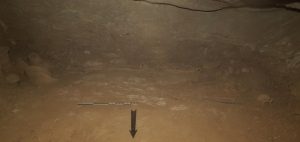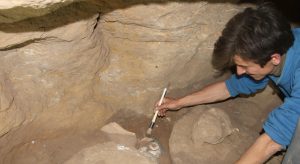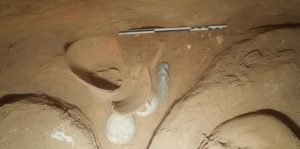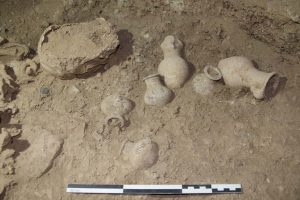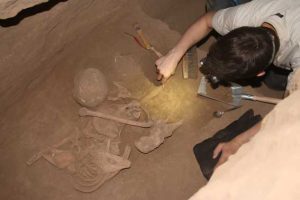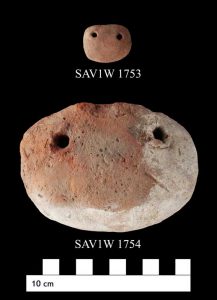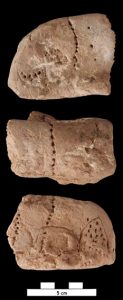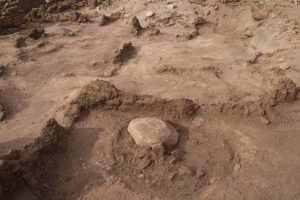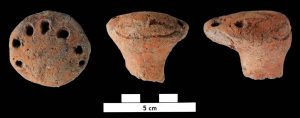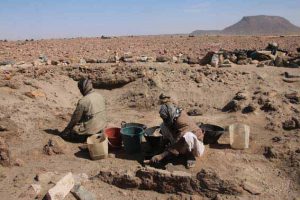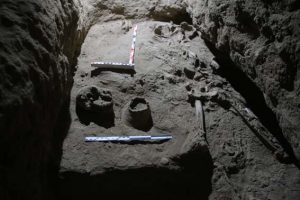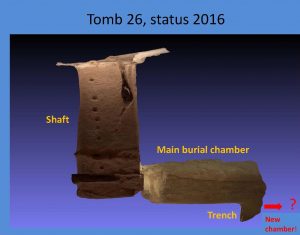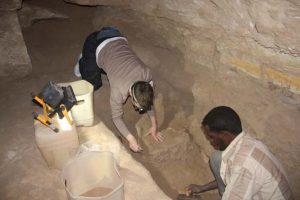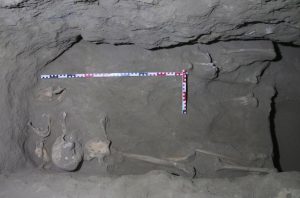As reported, the burials we are currently excavating in Tomb 26 were buried in Egyptian style in wooden coffins – unfortunately, with all the flooding of the chambers little of the wood has survived. We are mostly dealing with “negative” coffins – slightly darker outlines in the flood levels and sometimes decayed wood with traces of pigments. The colors white, blue and yellow are most common – there are also traces of red.
What has survived slightly better, are parts of the funerary masks – and here especially inlays. Already during the French excavations in neighboring tombs in SAC5, eyes of such funerary masks were found (see Minault-Gout/Thill 2012, vol. 1, 166, vol. 2, pl. 88).
In Tomb 26, a very nicely preserved eye pair is associated with the individual whom we can tentatively identify as Khnum-mes thanks to his shabti found last week.

One eye was laying upside-down next to the skull (blue arrow), the other one was found a bit further down the body close to the chest. The first was removed today, in order to continue cleaning the head part of the coffin – and it turned out to be the left one, nicely corresponding to its find location.
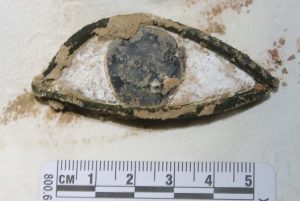
Both eyes are perfectly worked – the iris, set into white plaster, is made in a hard, black stone, giving a very natural appearance! Metallic outlines of the eye underline the high quality work of the mask which must have been really stunning when completely preserved.
In addition to Khnum-mes’ funerary mask, we have fragments of at least two more – insha’allah more pieces will turn up in the next days.
Reference
Minault-Gout/Thill 2012 = Minault-Gout, A. and Thill, F. Saï II. Le cimetière des tombes hypogées du Nouvel Empire (SAC5). Fouilles de l’Institut français d’archéologie orientale du Caire 69. Cairo 2012.

